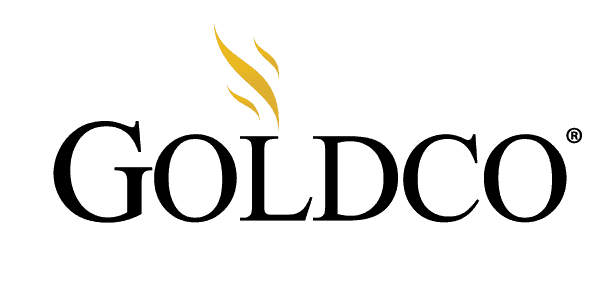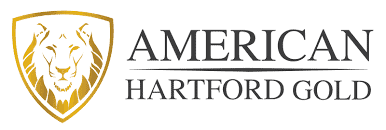
Investing in a gold Individual Retirement Account (IRA) can be an excellent way to diversify your retirement portfolio and protect your hard-earned wealth against economic uncertainties. A gold IRA, also known as a precious metals IRA, allows you to hold physical gold and other approved precious metals within your retirement account, potentially offering a hedge against inflation, currency devaluation, and stock market volatility.
Before diving into the world of gold IRAs, it’s essential to understand the process and the various steps required to get started. This involves thorough research, selecting the right gold IRA company, understanding the rules for investing in this type of IRA, and ultimately choosing the appropriate precious metals to include in your account. By following these crucial steps, you can gain the confidence to make informed decisions and embark on your journey toward a more secure and diversified retirement portfolio.
Understanding Gold IRAs
What is a Gold IRA?
A Gold IRA is a self-directed individual retirement account that allows investors like myself to invest in physical gold and other precious metals. It is a long-term investment strategy designed to grow money for retirement while offering some protection against economic uncertainties.
Benefits of Gold IRAs
There are several benefits to investing in a Gold IRA. First, gold has proven to be a reliable store of value throughout history. It often outperforms other investments during times of economic turmoil, acting as a hedge against inflation and financial crises.
Secondly, a Gold IRA offers diversification in my investment portfolio, reducing the risk associated with having all my assets tied to traditional financial markets. This can be especially beneficial during volatile market conditions when stocks, bonds, or other traditional investments may experience significant losses.
Lastly, a Gold IRA provides tax advantages similar to other IRAs. My contributions have an annual limit of $6,000 (or $7,000 if I am 50 years or older), and when I make a qualified withdrawal during retirement, I will only need to pay income tax at the same rate as traditional IRAs.
Risks Involved in Gold IRAs
Despite its many benefits, investing in a Gold IRA also comes with some risks. One significant risk is the potential for lower returns compared to other investments, especially if the price of gold remains stagnant or declines over time. This can impact the growth of my retirement savings and may limit my financial security in retirement.
Additionally, Gold IRAs often come with higher fees, including setup, storage, and administrative costs. This can eat into my potential returns and may make a Gold IRA a less attractive option compared to traditional IRAs or other investment vehicles.
Finally, it’s crucial to understand that a Gold IRA requires investment in physical gold or precious metals, which can lead to additional risks related to storage and transportation. Ensuring the security and authenticity of the metals is vital in maintaining the value of my investments.
Eligible Gold Investments
Types of Gold Coins
When investing in a gold IRA, I can choose from a variety of gold coins. The Internal Revenue Service (IRS) specifies that the coins must be 24 karats, with 99.5% purity or higher. Examples of eligible gold coins include American Gold Eagles, Canadian Gold Maple Leafs, and Austrian Gold Philharmonics. It’s important for me to buy coins from reputable dealers to ensure the quality and authenticity of my investment.
Gold Bullion Bars
In addition to coins, I can also invest in gold bullion bars. These bars must meet specific requirements set by the IRS, such as having a minimum fineness of 99.5% gold, and their weight must be expressed in either ounces or grams. I can choose bars from approved refiners, such as the Royal Canadian Mint, Johnson Matthey, and the Perth Mint. To stay compliant with IRS regulations, I must also ensure that my gold bullion bars are stored securely in an approved depository.
Gold ETFs and Mutual Funds
While my gold IRA primarily holds physical gold, I can also diversify my investments with gold Exchange Traded Funds (ETFs) and mutual funds. Gold ETFs, such as the SPDR Gold Trust and iShares Gold Trust, allow me to gain exposure to the gold market without directly owning the physical metal. Similarly, gold mutual funds invest in a mixture of gold-producing companies, gold-related stocks, and sometimes physical gold. By including a mix of gold ETFs and mutual funds in my portfolio, I can achieve a well-rounded investment strategy while still focusing on gold as a long-term store of value.
Establishing Your Gold IRA
As someone who’s interested in investing in a gold IRA, here are the steps I took to establish my own gold IRA.
Selecting a Custodian
First, I researched custodians who specialize in gold IRAs. These custodians are responsible for the storage, management and reporting of the precious metals held in the IRA. It’s essential to choose a reliable and reputable company to handle these responsibilities. I paid attention to fees, storage and insurance options, and customer reviews to help me make my decision.
Funding Your Gold IRA
After selecting a custodian, I completed the necessary paperwork to open my gold IRA. There are several ways that I could fund my account, such as depositing cash, transferring assets from another IRA, or executing a rollover from a 401(k) or other retirement accounts. Additionally, I had to decide whether I’d open a traditional IRA or a Roth IRA, as this determined when my contributions would be taxed.
When it came to investing in precious metals, I worked with a reputable precious metals dealer who met the IRS requirements for investing in physical gold bullion. They helped me not only purchase the gold but also ensured it was in compliance with the necessary regulations and safely stored at the approved depository.
Overall, establishing my gold IRA involved careful planning and research. By doing so, I was confident in my decisions and made an investment that suited my long-term financial goals.
Managing Your Gold IRA
Monitoring Your Portfolio
As an investor in a gold Individual Retirement Account (IRA), it is important for me to monitor my portfolio regularly. By keeping track of the investments within my gold IRA, I become aware of the trends and value fluctuations that affect my retirement savings. It is also essential for me to watch the gold market and look for new investment opportunities or diversification options that may strengthen my holdings.
Adding More Gold Investments
When it comes to adding more gold investments to my IRA, I consider various factors such as my current investment allocation, risk tolerance, and investment goals. One approach is to add more physical gold in the form of bullion or coins to my IRA while ensuring that all investments meet the required purity standards.
Moreover, I explore other investment options, such as gold mining stocks, gold ETFs, and gold mutual funds. These alternatives offer different levels of exposure to gold, and I diversify accordingly to maintain a well-rounded portfolio. However, it’s crucial for me to remember that not all options may be feasible for a gold IRA, and I always consult my financial advisor before making additions or adjustments.
In summary, managing my gold IRA effectively involves regularly monitoring my portfolio and considering diverse gold investment options to achieve an ideal balance. By staying up-to-date with market trends and being proactive in decision-making, I aim for a secure and prosperous retirement.
Withdrawing from Your Gold IRA
Distribution Options
As an individual who has invested in a gold IRA, it’s crucial to understand the different distribution options available to me. I can start taking withdrawals when I turn 59 1/2 years old. However, I don’t have to take any withdrawals until I reach 70 1/2, giving me an additional 11 years for my precious metals to potentially grow in value.
When it’s time for distribution, I can either take physical possession of the metals or choose to sell my holdings and then receive the cash proceeds. It’s essential for me to consider factors such as storage, insurance, and liquidity while deciding which option would better suit my needs.
Taxes
As with other IRAs, the withdrawals from my gold IRA may also be subject to taxes. When I take a distribution, the value of the precious metals withdrawn would be considered as income and would be taxed accordingly. If my gold IRA is a Traditional IRA, then the withdrawals would be taxed at my ordinary income tax rate. However, if my gold IRA is a Roth IRA, the distributions would be tax-free, provided I’ve had the account for at least five years and I’m at least 59 1/2 years old when I make the withdrawals.
Penalties
As a gold IRA holder, I need to be aware of the potential penalties I could face for early withdrawal. If I withdraw from my gold IRA before reaching the age of 59 1/2, I may have to pay a 10% early withdrawal penalty on the taxable amount, in addition to the regular income tax. Some exceptions to the early withdrawal penalty exist, such as financial hardship, disability, or using the funds for qualified higher education expenses, but it’s crucial for me to consult a tax professional to understand the specific rules applicable to my situation.
Frequently Asked Questions
How much is the minimum investment for a Gold IRA?
There is no set minimum investment for a Gold IRA, as it varies by the company you choose to work with. However, many companies require an initial investment of at least $5,000 to $10,000 worth of precious metals to open an account. It’s important to research and compare different companies to find the one that best suits your investment goals.
What are the best Gold IRA companies to choose from?
There are a number of well-established Gold IRA companies to consider when looking to invest. Some popular options include Augusta Precious Metals, Goldco, and Oxford Gold Group. It’s essential to research each company’s fees, customer reviews, and reputation before making a decision.
What are the benefits of having a Gold IRA?
A Gold IRA provides numerous benefits for investors, including portfolio diversification, inflation protection, and the potential for long-term growth. Investing in gold can offer protection against economic instability and help preserve your wealth in turbulent times. Additionally, a Gold IRA allows you to hold physical gold within a retirement account, offering potential tax advantages compared to owning gold outright.
What are the rules and regulations for a Precious Metals IRA?
A Precious Metals IRA, which includes Gold IRAs, must adhere to certain rules and regulations set forth by the Internal Revenue Service (IRS). Some key points to remember include:
- The precious metals must meet specific purity requirements (e.g., a minimum of 99.5% for gold);
- The metals must be held by an approved custodian;
- There is an annual contribution limit for IRAs ($6,000 in 2022 or $7,000 if you are age 50 or older);
- Withdrawals are subject to the same tax rules and penalties as traditional IRAs.
Remember that it’s crucial to consult with a financial advisor to ensure you adhere to all the necessary regulations.
Is a Gold IRA a better option than owning physical gold?
Both options have their own advantages and disadvantages, ultimately depending on your individual investment goals and risk tolerance. A Gold IRA allows you to hold physical gold within a retirement account, providing tax benefits and potentially lower fees compared to owning physical gold outside of an IRA. However, owning physical gold outright offers you more direct control over your assets and may provide increased liquidity in the event of a market downturn.
How can I start the process of opening a Gold IRA?
Beginning the process of opening a Gold IRA involves first researching and selecting a reputable Gold IRA company. Once you’ve chosen a company, you’ll need to complete an application, rollover funds from an existing IRA or 401(k), and select which precious metals you want to invest in. As always, it’s important to consult with a financial advisor to ensure you make the best decisions for your unique financial situation.




